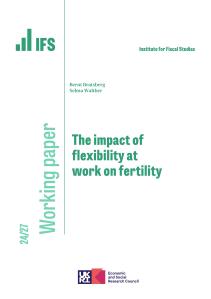Expanding preschool education has the dual goals of improving child outcomes and work incentives for mothers. This paper provides evidence on the second, identifying the impact of preschool attendance on maternal labor market outcomes in Argentina. A major challenge in identifying the causal effect of preschool attendance on parental outcomes is non-random selection into early education. We address this by relying on plausibly exogenous variation in preschool attendance that is induced when children are born on either side of Argentina's enrollment cutoff date of July 1. Because of enrollment cutoff dates, 4 year-olds born just before July 1 are 0.3 more likely to attend preschool. Our regression-discontinuity estimates compare maternal employment outcomes of 4 year-old children on either side of this cutoff, identifying effects among the subset of complying households (who are perhaps more likely to face constraints on their level 2 preschool attendance).
Our findings suggest that, on average, 13 mothers start to work for every 100 youngest children in the household that start preschool (though, in our preferred specification, this estimate is not statistically significant at conventional levels). Furthermore, mothers are 19.1 percentage points more likely to work for more than 20 hours a week (i.e., more time than their children spend in school) and they work, on average, 7.8 more hours per week as consequence of their youngest offspring attending preschool. We find no effect on maternal labor outcomes when a child that is not the youngest in the household attends preschool. Finally, we find that at the point of transition from kindergarten to primary school some employment effects persist.
Our preferred estimates condition on mother's schooling and other exogenous covariates, given evidence that mothers' schooling is unbalanced in the vicinity of the July 1 cutoff in the sample of 4 year-olds. Using a large set of natality records, we found no evidence that this is due to precise birth date manipulation by parents. Other explanations, like sample selection, are also not fully consistent with the data, and we must remain agnostic on this point. Despite this shortcoming, the credibility of the estimates is partly enhanced by the consistency of point estimates with Argentine research using a different EPH sample and sources of variation in preschool attendance (Berlinski and Galiani 2007).
A growing body of research suggests that pre-primary school can improve educational outcomes for children in the short and long run (Blau and Currie 2006; Schady 2006). This paper provides further evidence that, ceteris paribus, an expansion in preschool education may enhance the employment prospects of mothers of children in preschool age.










